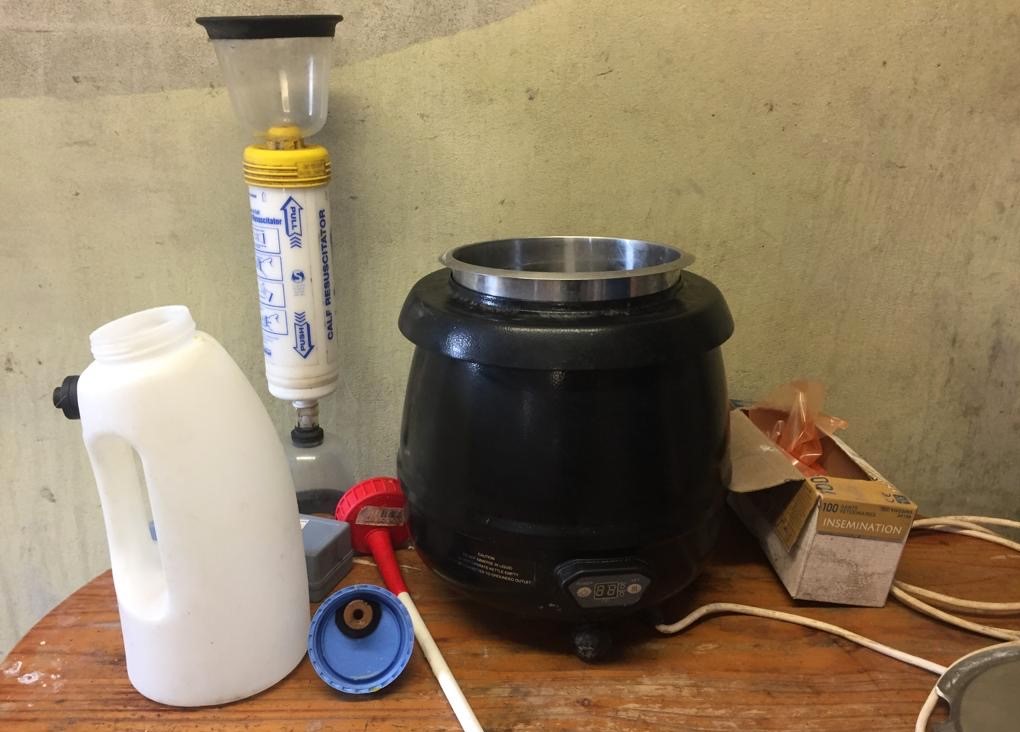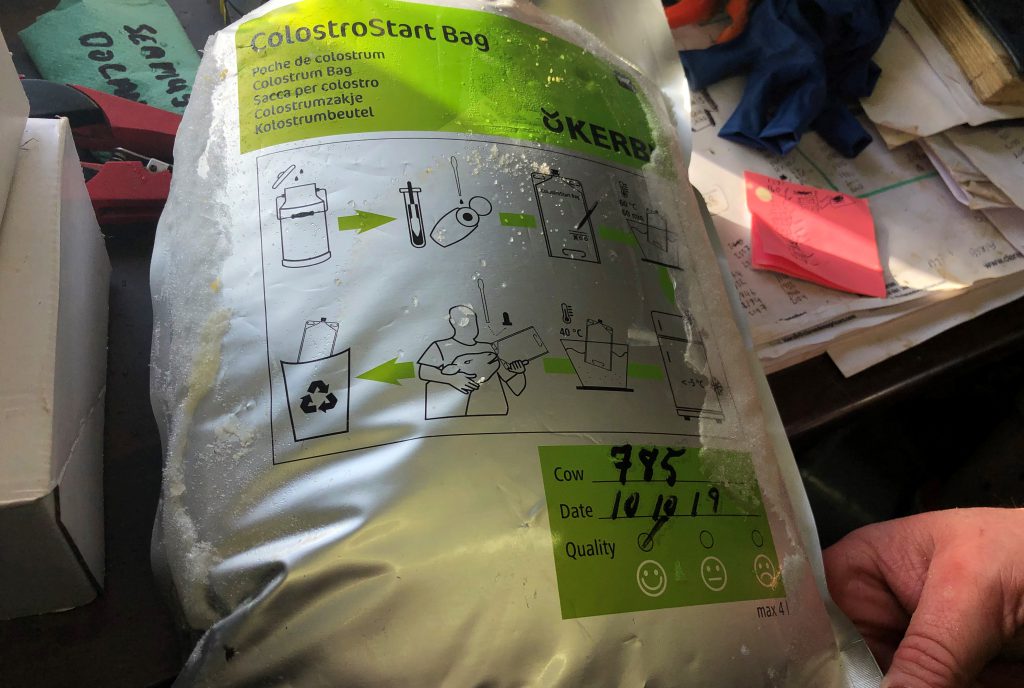With spring only around the corner, farmers are beginning their preparations before calving kicks off. Feeding adequate colostrum to the calf once he/she is born is the most important step in the calf rearing process.
Once born, at least 3L of colostrum should be fed and if colostrum is being stored, it is advisable to heat to 38° – before being fed.
While travelling around dairy farms, I have come across some of the many different ways farmers are using to efficiently heat and defrost colostrum.
It is important to note that colostrum should not be heated too quickly – or to above 38° – or else, some of the antibodies will be destroyed decreasing the quality of the colostrum.
The following are some of the innovative and efficient options I have come across.
This option (seen below) is more commonly used to heat milk for lambs; but in this scenario the farmer was using it to heat colostrum for calves.
The next option (seen below), otherwise known as a soup kettle, is usually seen in a kitchen or a shop; but in this case the farmer was using it as an effective way of heating colostrum for his calves.
The third option (seen below) – which is probably the most expensive of the three – is an effective way of heating colostrum but, also, for heating large volumes of milk.
The milk is known to be heated extremely quickly with this option.
Pooling colostrum is not advised for bio-security reasons; however, this is not always practiced on some farms.
If it is undertaken it is important to be aware of the risks and only pool good-quality colostrum. If Johnes disease is an issue on farm, it should not be carried out under any circumstances.
Defrosting colostrum
If colostrum is being frozen, only good-quality colostrum should be frozen and the date in which it was collected along with a quality reading should be clearly marked on the storage container/bag.
Colostrum should be defrosted using warm water – with a temperature below 50º.
There are many different ways of storing colostrum. The most common way seen on dairy farms is usually using a 2L milk carton. Although this is a sufficient storage container, defrosting colostrum stored in this way can be time consuming.
The flat 4L aluminium pouch (seen below) was a different option I came across on a farm visit.
The farmer, who had this pouch, found it a quick and efficient way of defrosting colostrum – with the colostrum defrosting in a matter of minutes.
Another option is to store colostrum in resealable or zip-lock plastic bags. This way the colostrum can also be defrosted quickly – usually faster than when it is stored in plastic milk cartons.
Marking the volume of colostrum on the bag or other container is also useful. This allows you to take out exactly what is needed from the freezer without any colostrum being wasted.






